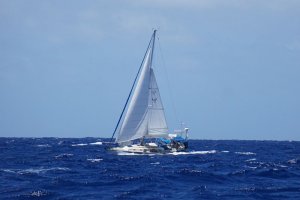There is an argument against storm jibs, storm trysails, short stays and all of it, which I think always ought to be part of the conversation.
In my (limited) experience, shorthanded crews will have trouble rigging any of it.
If you can sail, reefed sails work well. In a real storm, sailing stops and survival commences--probably running off dead downwind with a series drogue.
It is exceptionally hard to rig and control any sails in a gale. A passing front may appear with 40 knots and little notice, and digging out a storm trysail will be problematic.
In Force 10 with big seas and a crew of nine on deck, we had a difficult time rigging a storm trysail. It took hours, at night. And the guys were supermen.
It can be argued that a cruising boat should stick with easy rig. Sails will likely be furled in survival conditions, or a scrap of jib or very deep mainsail reef.
Skip Novak is persuasive on the topic, at least to me:
https://www.youtube.com/watch?v=P66FPQhRwy8
In my (limited) experience, shorthanded crews will have trouble rigging any of it.
If you can sail, reefed sails work well. In a real storm, sailing stops and survival commences--probably running off dead downwind with a series drogue.
It is exceptionally hard to rig and control any sails in a gale. A passing front may appear with 40 knots and little notice, and digging out a storm trysail will be problematic.
In Force 10 with big seas and a crew of nine on deck, we had a difficult time rigging a storm trysail. It took hours, at night. And the guys were supermen.
It can be argued that a cruising boat should stick with easy rig. Sails will likely be furled in survival conditions, or a scrap of jib or very deep mainsail reef.
Skip Novak is persuasive on the topic, at least to me:
https://www.youtube.com/watch?v=P66FPQhRwy8

